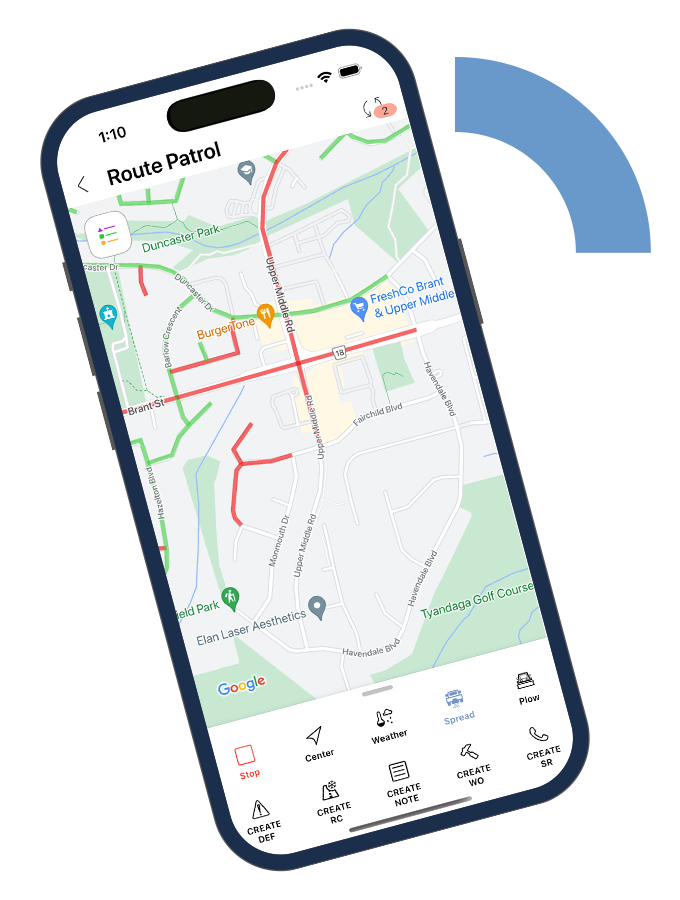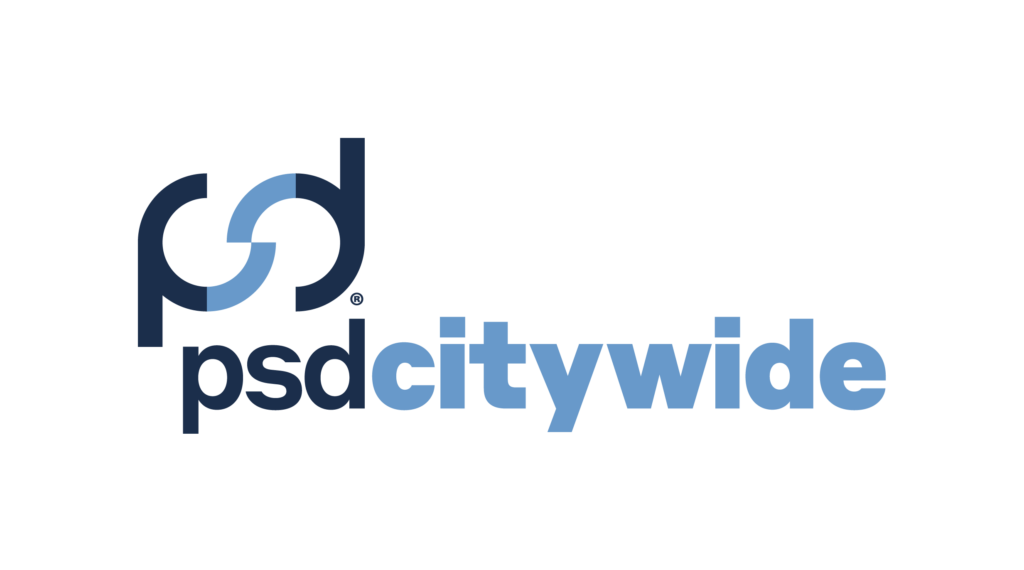Introduction
Growing communities, both small and large, face more pressure to deliver high service levels and maintain many types of infrastructure. From roads to trails and parks, local governments are responsible for neighbourhood upkeep.
The Citywide Route Patrol add-on feature was built with these realities in mind. It integrates seamlessly integrate with Citywide Maintenance and the broader Enterprise Asset Management System (EAMS). Citywide Route Patrol empowers field staff, supports regulatory compliance, and delivers accurate data to plan smarter.
This article explores the three ways Citywide Route Patrol improves maintenance management processes smarter.

1. Take the Guesswork Out of Daily Patrols
Citywide Route Patrol helps communities create standardized, repeatable patrol routes for both routine and seasonal tasks. While legacy systems involve generate miscommunication, Citywide Route Patrol allows field users to access routes digitally, anytime, without manual assignment. This replaces outdated processes, helps maintenance staff stay focused, and uses time more efficiently.
With Citywide Route Patrol, staff can easily document asset deficiencies such as cracks, surface deterioration, potholes, or debris through the Citywide Mobile app, available on Android and iOS both online and offline. Field staff capture each report with precise GIS coordinates, which ensures accurate location tracking and makes follow-up easy. Citywide Route Patrol supports both year-round and seasonal inspections, including winter maintenance. It allows users to record weather and road conditions, track plow activity, and log salt or sanding operations. Users can also add detailed notes, providing comprehensive documentation directly from the field.
After implementing Citywide Route Patrol, the Town of LaSalle staff valued the practical usefulness and simple user interface.
“Route Patrol is one of the best modules in Citywide… you can do sidewalk inspections, roadside cutting, line painting – all of that.” – Mark Beggs, Town of LaSalle
2. Connect the Field and the Office
Citywide Route Patrol bridges the gap between patrolling crews and local government administration. It both simplify workflows for supervisors and maintenance patrolling staff and facilitates a steady stream of communication across departments.
Manual entry systems require thorough cross-checking and users often need to repeatedly submit data into multiple siloed systems. The Citywide Platform simplifies this process. Data collected by patrols in the Citywide Route Patrol module flows directly into Citywide Maintenance and Citywide Assets, eliminating time consuming cross-checking processes.
This operational loop seamlessly connects field workers with supervisors and managers, simplifying tasks for both:
-
- Field staff benefit from the Citywide Route Patrol mobile app by following predefined routes, logging deficiencies, and generating work orders directly from the field.
-
- Once a patrol is synced, supervisors review observations, assign new work orders, track service requests, and prioritize maintenance tasks.
-
- Built-in reporting and compliance mapping tools provide full visibility into patrol coverage, outstanding issues, and regulatory requirements, which supports data-driven decisions and accountability.
Citywide Route Patrol tightens municipal maintenance management by ensuring field data feeds directly into workflows and accountability systems in the office.
3. Strengthen Decisions with High-Quality Data
Local governments face limited budgets, growing communities, and increasing accountability. As a result, maintenance requires not only responding to issues, but anticipating maintenance needs. Citywide Route Patrol provides a comprehensive dataset that gives local governments access to accurate information crucial for evidence-based decision-making.
Route Patrol automatically links activities, like spatial paths, timestamps, photos, notes, recorded deficiencies, weather conditions, and road surface updates, to specific assets, building a detailed maintenance history over time. Users can also link these assets to Citywide GIS for deeper visual analysis.
The platform supports a variety of tailored exportable and configurable MMS reports. Comprehensive reporting tools—such as the Asset Patrol Report and Deficiency Report—allow teams to filter data by date, patrol type, asset maintenance class, deficiency name, status, or current compliance level. These reports support proactive decision-making, ensure regulatory compliance, and provide clear insight into overall patrol coverage and performance.
These tools give administrators the ability to:
-
- Spot recurring issues or underperforming areas.
-
- Justify capital planning decisions with inspection history and deficiency trends.
-
- Track levels of service against internal standards or provincial- and state-regulated minimum maintenance standards (MMS).
-
- Communicate performance and needs clearly to council and residents.
By providing clean, complete, and timely data, Citywide Route Patrol builds managers’ confidence in the information they need for strategic capital planning and budgeting.
Route Patrol in Practice
To get a better understanding of what Citywide Route Patrol can do for your local government, walk through the step-by-step process of how a maintenance supervisor would leverage the module, from one-time set up processes to data analysis and continued growth.
-
- Configuring assets and maintenance classes: The initial step in using Route Patrol is setting up the assets’ maintenance classes to determine the frequency of patrols. For example, in Ontario, Class 1 roads require inspection 3 times weekly, while Class 4 roads require one inspection bi-weekly. Configuring these maintenance classes in Citywide Route Patrol is a one-time setup that allows supervisors to easily schedule and plan out routes in the future.
-
- Linking linear assets to GIS: Linking roads, sidewalks, trails, and more to GIS allows users to visualize their routes and easily identify the spatial location of any problem areas or concerns. Once assets are linked to GIS, the Citywide Assets, Maintenance, and GIS modules can communicate with each other with real-time asset data updates.
-
- Build routes: After assigning maintenance classes, supervisors can build customized routes to standardize future patrols. Routes can be created directly in the Citywide GIS Viewer or via the Citywide Route Patrol module by selecting assets based on category, department, group, class, or via the map. Once a route is created, it is saved and can be edited in the future.
-
- Create route work orders and schedules: Generate route schedules by configuring a route work order and frequency. The frequency can be based on compliance regulations, municipal guidelines, or adjusted based on weather or maintenance conditions.
-
- Monitor field activity: After generating work order schedules, patrolling staff receive their assigned route patrols on the Citywide Mobile app. Supervisors can monitor the data received from Citywide Route Patrol to ensure that the right work is being done and adjust the route patrol schedule as needed.
-
- Act on deficiencies and maintain compliance: Citywide modules can be set up to continuously monitor local government’s compliance with federal, state, and provincial maintenance regulations. By tracking Citywide Route Patrol’s data completeness and analysing the information received, supervisors can take action on maintenance deficiencies when needed and ensure alignment with crucial regulations. Citywide’s interconnected reporting capacities simplify powerful, tailored data analysis and compliance.
-
- Adjust routes and schedules as necessary: Citywide Route Patrol is a flexible system, with the capability to change, grow, and evolve with your community. By continuously learning and adjusting routes when necessary, supervisors can enhance their field data collection processes and maintain a sustainable community.
Real-World Results: Southwest Middlesex
For the Municipality of Southwest Middlesex, Route Patrol is a game changer. Before the switch, the local government used paper binders to track patrols, thus making it difficult to maintain consistent records or respond quickly to service needs. With Route Patrol, staff now complete road patrols digitally, capturing real-time, GIS-integrated data on road conditions, maintenance issues, and deficiencies directly from the field.
Digital tracking has improved service levels and provided accurate, time-stamped records to meet provincial standards. Route Patrol links directly to service requests and work orders, so no issue gets missed. The system improves record-keeping, risk management, and overall service delivery.
Since switching, the municipality estimates yearly savings of $5,000 to $8,000.
Key Takeaways
Citywide Route Patrol is an innovative, easy to use, and effective tool for local governments. Patrollers, managers, and planners all benefit from access to custom, GIS-integrated, and regulation compliant route planning. With tailored data entry fields that flow through the Citywide Platform modules, Route Patrol enhances asset data quality, providing a reliable foundation for capital planning and maintenance management processes.
To bridge the gap between field operations and administration in your local government operations, PSD Citywide is ready to help. Contact us today to learn more about implementing Citywide Route Patrol in your community.



